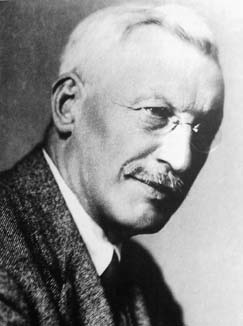
Alfred Cardew Dixon
 المؤلف:
R Gow
المؤلف:
R Gow
 المصدر:
ome Galway professors of mathematics and natural philosophy
المصدر:
ome Galway professors of mathematics and natural philosophy
 الجزء والصفحة:
...
الجزء والصفحة:
...
 31-3-2017
31-3-2017
 789
789
Born: 22 May 1865 in Northallerton, Yorkshire, England
Died: 4 May 1936 in Northwood, Middlesex, England

Alfred Dixon was the son of the Rev George Thomas Dixon (born Brigg, Lincolnshire about 1838), who was the Wesleyan Minister of Northallerton. His mother was Ellen Cardew (born Alford, Lincolnshire about 1842). He was the older brother of Arthur Dixon. Alfred was educated at the Quaker School in Kendal. From Kendal he went to Bath where he attended Kingswood School. Whittaker, in [4], describes him as a prodigy:-
... the school examiner, finding that [Dixon] obtained the maximum marks in papers set at the annual examination, one year deliberately set a problem that could not be done, only to receive from Dixon an elaborate proof of its impossibility.
In 1881 he was attending the Wesleyan College For Wesleyan Ministers Sons in Bath. He attended London University, graduating with an M.A., then in 1883 he entered Trinity College, Cambridge. He graduated in 1886 as Senior Wrangler in the Mathematical Tripos (ranked first in the list of students with First Class degrees). He had been taught by a number of famous mathematicians at Cambridge, including Glaisher, Rouse Ball, Forsyth, and he attended lectures by Cayley. Dixon was appointed a Fellow of Trinity College in 1888 and was awarded the second Smith's prize.
Dixon was appointed to the Chair of Mathematics at Queen's College, Galway, Ireland in 1893. (This university is now named University College, Galway.) Dixon's appointment was to fill the chair left vacant when George J Allman, a noted historian of mathematics, retired. The appointment to Galway seems to have been good for Dixon since his mathematical output improved both in quantity and in quality from this time.
In 1901 Dixon was appointed to the chair of mathematics at Queen's College, Belfast. His chair at Galway was filled one year later by another equally outstanding mathematician when Bromwich was appointed.
Dixon's main area of research was in differential equations and he did early work on Fredholm integrals independently of Fredholm. He worked both on ordinary differential equations and on partial differential equations studying abelian integrals, automorphic functions, and functional equations. Whittaker describes his research as follows:-
Dixon was never content with formal results, but always took care to investigate carefully the conditions under which his results were valid. In this respect his analysis is comparable in thoroughness with that of Carleman, Hardy, Hilbert and Schmidt.
Soon after his appointment at Galway Dixon published his only textbook The Elementary Properties of Elliptic Functions (1894). During his time in Galway, Dixon proved a combinatorial identity which was later generalised by Fjelsted in 1954. Dixon's identity states that:-
The sum from k = 0 to n of (-1)k(nCk)3 is 0 if n is not 2m
and is (-1)m(3m)!/(m!)3 if n = 2m.
As J Ward notes in [2]:-
In general there are few known identities involving sums of products of several binomial coefficients. A spectacular generalisation of Dixon's beautiful identity is given by equation .31 on page 171 of [R L Graham, D E Knuth and O Patashnik, Concrete Mathematics (1989)] which must surely be the non plus ultra of the species.
Later in his career Dixon worked on the problem of a loaded elastic rectangular plate. The problem was proposed to him first by the professor of engineering at Belfast. In its original form the question was to study the effect produced by placing a weight on a thin uniform rectangular plate which was clamped round the edges.
A devout Methodist Dixon was active in the Philharmonic Orchestra. He was elected to the Royal Society in 1904. After he retired from his chair in Belfast in 1930 he served as president of the London Mathematical Society from 1931 until 1933. He did not wish to retire but [4]:-
... his retirement was made inevitable by eye trouble which culminated ... in an operation involving the loss of one eye. However, he recovered after a time and undertook such a burst of examination work that he complained of being more overworked in retirement than he had ever been in office. ... His death ... came as a shock to his friends: he had a sudden seizure and died from heart failure in an hour.
Articles:
- R Gow, Some Galway professors of mathematics and natural philosophy, Irish Math. Soc. Bull. 35 (1995).
- J Ward, 100 years of Dixon's identity, Irish Math. Soc. Bull. 27 (1991), 46-54.
- E T Whittaker, Alfred Cardew Dixon, Obituary Notices of Fellows of the Royal Society of London II (1936-38), 165-174.
- E T Whittaker, Alfred Cardew Dixon, J. London Math. Soc. 12 (1937), 145-154.
 الاكثر قراءة في 1865to1869
الاكثر قراءة في 1865to1869
 اخر الاخبار
اخر الاخبار
اخبار العتبة العباسية المقدسة


